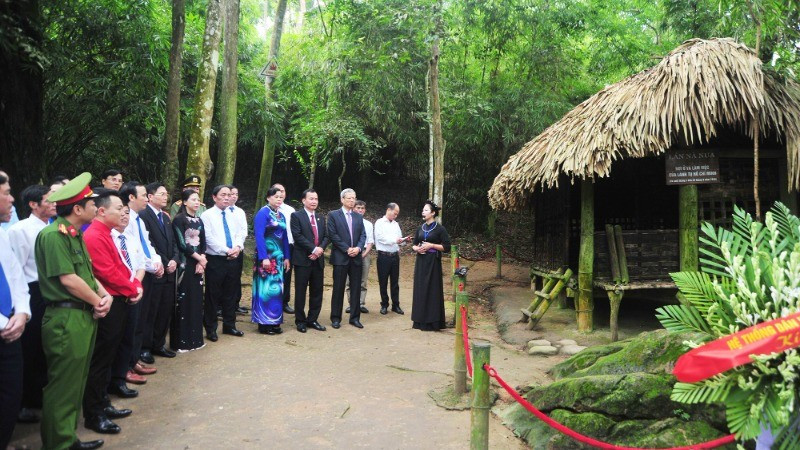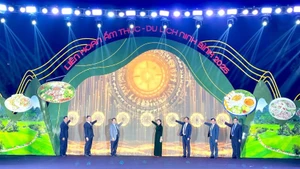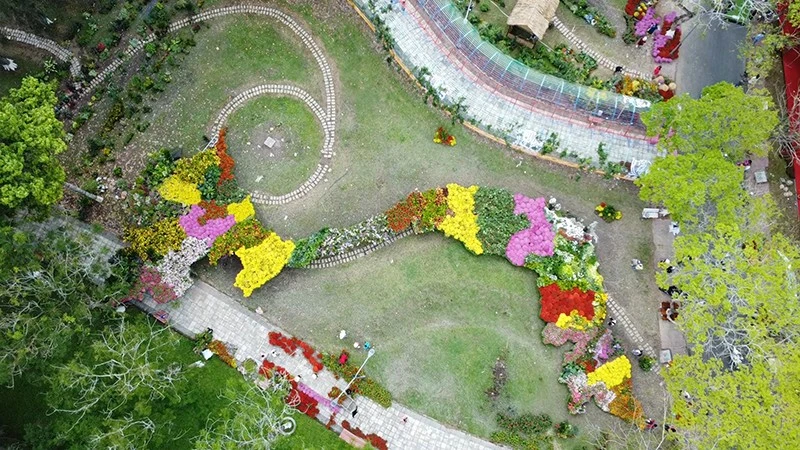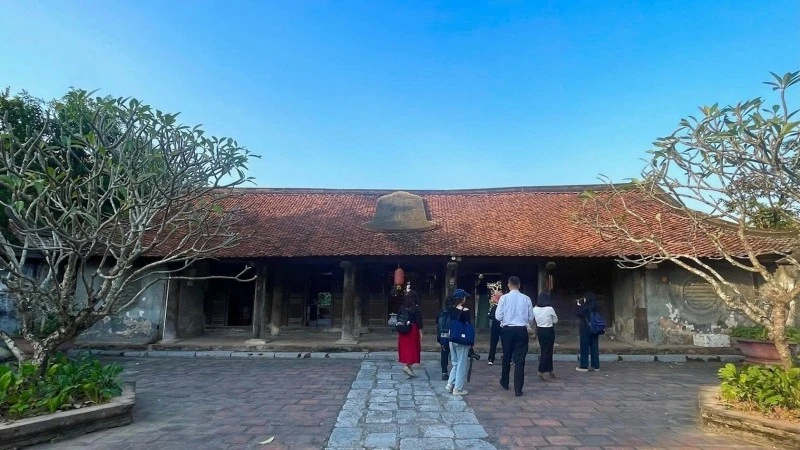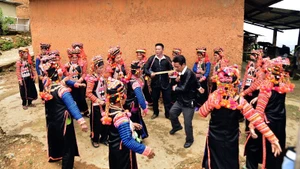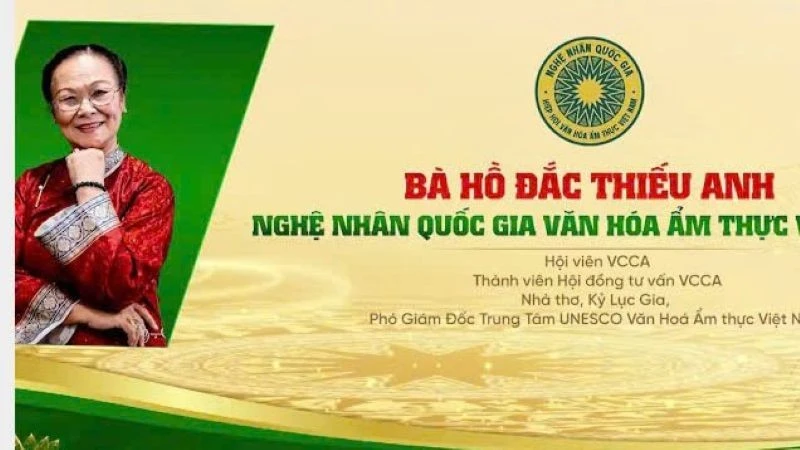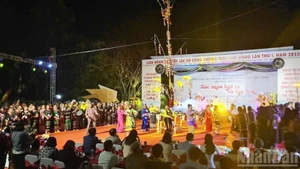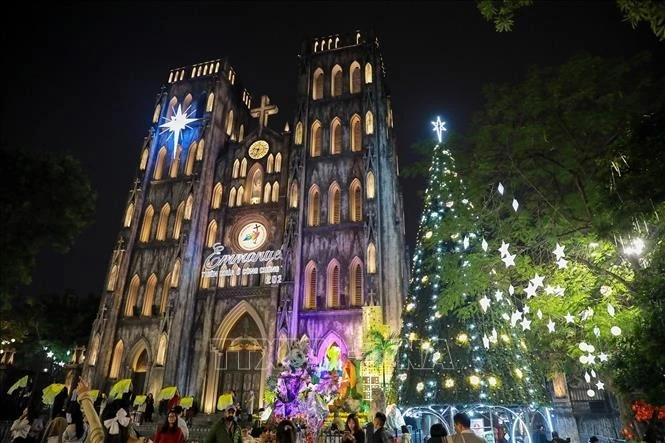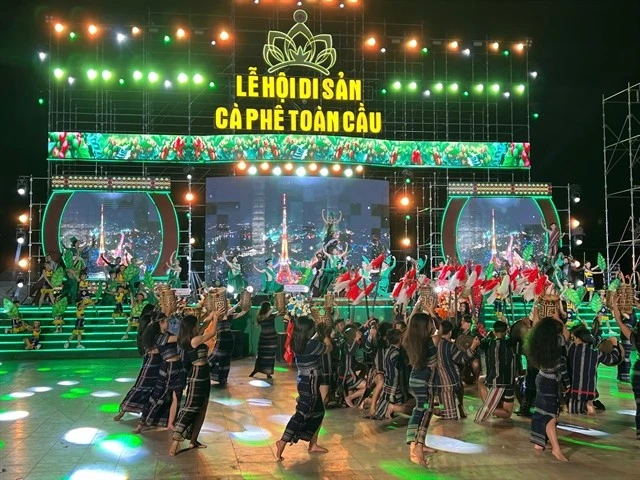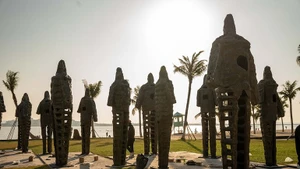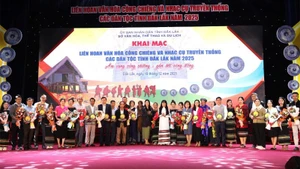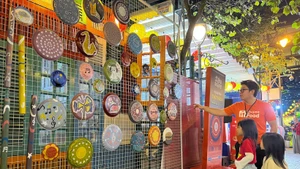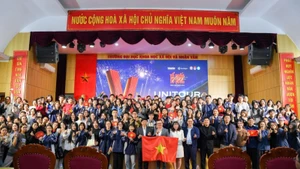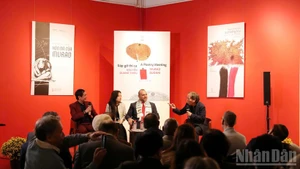The National Party Conference, held from August 13 to 15, 1945, in Tan Trao, gathered the collective wisdom of the entire Party to analyse in depth the global and domestic situation. It resolved to seize the opportunity to lead the people in a general uprising to seize power, and elected the National Uprising Committee to direct this important work. (Excerpt from a speech by General Secretary Do Muoi at the meeting commemorating the 50th anniversary of the August Revolution and National Day, September 2, held in Tan Trao on August 16, 1995).
In 1945, the global and domestic situation changed rapidly in favour of the Vietnamese revolution. On the night of March 9, 1945, Japan launched a coup against France across Indochina. The French resisted weakly and quickly surrendered. On March 12, 1945, the Standing Committee of the Central Committee of the Indochinese Communist Party issued the directive on Japan and France shooting at each other and our actions. Immediately after the directive was issued, the anti-Japanese, national salvation movement surged strongly, and numerous local uprisings broke out.
In Tuyen Quang, on the night of March 10, 1945, the Thanh La uprising erupted under the direct leadership of comrade Ta Xuan Thu and the Command of Nguyen Hue Sub-zone. The revolutionary armed forces quickly disarmed the militia, forced the village chiefs and militiamen to submit, hand over their guns, royal decrees, and bronze seals. Thanh La Commune was completely liberated that night. The uprising then expanded to neighbouring communes and advanced to liberate Dang Chau, the district capital of Son Duong.
On March 16, 1945, in Thanh La (now Minh Thanh Commune, Son Duong District, Tuyen Quang Province), a rally took place, announcing the establishment of Tu Do District and the district's provisional revolutionary committee. The Thanh La uprising was victorious, and the establishment of Tu Do District was one of the first commune- and district-level revolutionary governments established in the country.
Amid the rapidly changing global and domestic situation favourable to the Vietnamese revolution, in late April and early May 1945, to facilitate the direction of the national revolutionary movement and prepare forces to seize the opportunity for a General Uprising nationwide, President Ho Chi Minh instructed comrade Vo Nguyen Giap.
It was essential to immediately choose a site within Cao Bang–Bac Kan–Lang Son or Tuyen Quang, Thai Nguyen with good people, a solid revolutionary base, favourable terrain, and convenient connections to both lowland and highland areas, to abroad, and capable of protecting our forces.
Carrying out President Ho Chi Minh’s directive, comrade Vo Nguyen Giap went to Upper Kim Quan (in the Tan Trao area) with the leadership of the Nguyen Hue Sub-zone, including comrades Song Hao, Ta Xuan Thu, Le Duc Ton, and Le Trung Dinh. After surveying the terrain along the Pho Day River from Kim Quan to Tan Trao Commune and holding discussions, the group unanimously chose Tan Trao as the central base for the leadership of the Party Central Committee and President Ho Chi Minh.
At Tan Trao, President Ho Chi Minh and the Party Central Committee directed the urgent preparation of revolutionary forces for the General Uprising. In early June 1945, he ordered the establishment of the Liberated Zone comprising six provinces, including Cao Bang, Bac Kan, Lang Son, Ha Giang, Tuyen Quang, Thai Nguyen—and surrounding areas of Bac Giang, Vinh Yen, Phu Tho, and Yen Bai, with Tan Trao designated as the capital of the Liberated Zone.
In the early days of his arrival in Tan Trao, President Ho Chi Minh stayed with the family of Nguyen Tien Su in Tan Lap Hamlet, then known as Kim Long Village. Later, to ensure security and convenience for his work, he moved to Na Nua Shack in Tan Trao Commune, Son Duong District, where he worked from late May until August 22, 1945, to prepare and lead the August 1945 General Uprising.
On August 13, 1945, the Party Central Committee decided to establish the National Uprising Committee, headed by General Secretary Truong Chinh. That night, the Committee issued Order No. 1, calling for a general uprising to seize power nationwide. At the Na Nua Forest, from August 14 to 15, 1945, the Party’s National Conference was held and resolved to seize the opportunity to launch a general uprising throughout the country.
Also in Tan Trao, on August 16–17, 1945, the National People’s Congress met to endorse the Party’s call for a general uprising; it approved ten major policies of the Viet Minh Front, elected the National Liberation Committee of Viet Nam headed by President Ho Chi Minh, and adopted the national flag and anthem.
On the afternoon of August 16, under the Tan Trao banyan tree, comrade Vo Nguyen Giap, on behalf of the Revolutionary Military Committee, read Order No. 1, launching the march to liberate Thai Nguyen Town and then advancing to liberate Ha Noi and other provinces and cities nationwide. From this moment, the nationwide uprising began and spread across all three regions of the country.
Under the wise and brilliant leadership of the Party and President Ho Chi Minh, millions of Vietnamese people rose up as one to seize power. The great victory of the August Revolution in 1945 opened a new era in the nation's history: the era of independence, freedom, and socialism, a brilliant era, the most glorious in Vietnamese history, known as the Ho Chi Minh era.
The Party Committee and the people of Tuyen Quang Province are immensely honoured and proud to have witnessed and contributed to these historic victories of the Vietnamese revolution.
This May, at the Special National Relic Site of Tan Trao, the number of visitors returning to the revolutionary roots has risen sharply. Long queues of domestic and international tourists wait to pay tribute to Uncle Ho and visit Na Nua Shack and Tan Trao Communal House, where the National People’s Congress was held from August 16 to 17, 1945. The steady stream of visitors creates a moving impression of the people's deep affection for this cradle of the revolution.
Nguyen Thi Nga, a tourist from Quang Ninh, shared that this was her second visit to Na Nua Shack. She said that at each historic site, one can still feel the presence of Uncle Ho. Tan Trao today is both familiar and new—it has changed a lot, the people’s lives have improved, houses are spacious and clean, and transportation is convenient.
When visiting and extending Tet greetings to the Party Committee, authorities, and people of Tuyen Quang Province on January 28, 2011, General Secretary and National Assembly Chairman Nguyen Phu Trong wrote:
“For a long time, Tan Trao, Son Duong, Kim Binh, and Chiem Hoa have been sacred and beloved historical landmarks associated with our Party’s heroic revolutionary struggle, our nation, and our beloved President Ho Chi Minh. Tuyen Quang, Capital of the Liberated Zone, Capital of the Resistance, will forever be the pride of the people of Tuyen Quang and the entire country. The Party, the State, and our people highly value and are deeply grateful for the immense contributions and sacrifices of the Party Committee, authorities, and people of Tuyen Quang…”
In implementing Directive No. 05-CT/TW of the Politburo on “Promoting the study and following of Ho Chi Minh’s thought, morality, and lifestyle”, on May 23, 2021, the Standing Committee of the Tuyen Quang Provincial Party Committee issued Project No. 02-DA/TU, to further innovate the content and methods of operation of the Fatherland Front and socio-political organisations. The initiative is closely linked to local patriotic movements and campaigns and has received strong support from the entire political system.
After nearly four years of implementation, by 2025, 10,429 poor, near-poor, and disadvantaged households will have had their homes repaired or rebuilt; assistance and gifts have been provided to those affected by storms and floods, poor families, and policy beneficiary households, amounting to over 11.6 billion VND. These efforts have strengthened the close bond between Party officials and the people, generating public trust and consensus.
The 80th anniversary of President Ho Chi Minh’s return to Tuyen Quang to lead the August Revolution is an opportunity to rekindle pride, a sense of responsibility, and a commitment to continue the revolutionary tradition and nurture the aspiration for development.
Comrade Ha Thi Nga, Secretary of the Provincial Party Committee and Head of the National Assembly Delegation of Tuyen Quang Province, affirmed that the legacy of Tan Trao serves as both a foundation and a driving force for the Party and people of Tuyen Quang to continue striving to build a province worthy of the historical trust placed upon it. It is the realisation of the goal “a prosperous people, a strong country, democracy, justice, and civilisation” so that “everyone has food, clothing, and access to education,” as Uncle Ho once taught.
